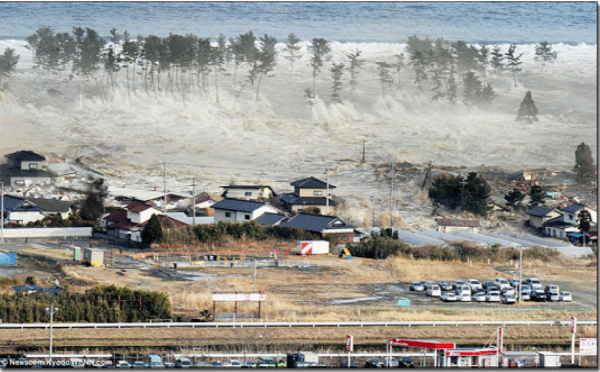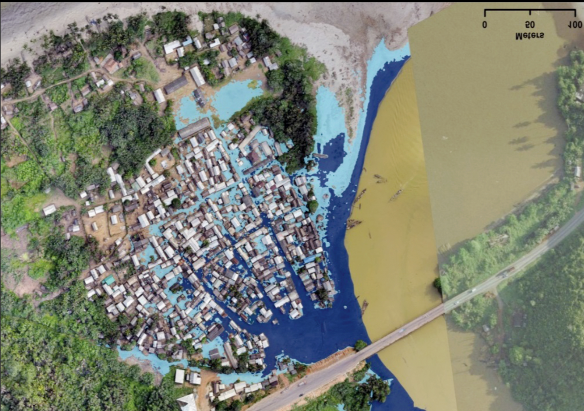
Ghana’s Coast - hazards, planning, management, disaster response
“It all started around midnight. The pressure from the waves was so intense that everyone had to run for their life. As I speak now, my boat, outboard motor and nets have all been carried away.
Advertisement
I do not know what I will do to survive because I have nothing left to lean on,” Adzi Raka Tetteh, a victim of the recent tidal destruction at James Town in Accra. – Daily Graphic.
News reports
Extreme tidal events along the coast of Ghana in April and September 2016 did considerable damage to private and public infrastructure. The storms that swept the coast, destroying homes, fishing boats, outboard motors, fishing nets and other equipment of fishermen underscored the vulnerabilities of many shorefront communities to coastal hazards resulting from changing climate and rising sea levels. After the disasters, officials (politicians) were reported to have paid sympathy visits to the affected communities. Showing sympathy to communities that have experienced misfortune is good and politicians cannot be faulted for doing that. It is, however, important to identify and carry out appropriate interventions in such vulnerable coastal communities instead of waiting for those areas to be battered before any interventions are undertaken.
The destruction that followed the events has necessitated the need to re-examine institutional arrangements in place to plan for and respond to such hazards.
Coastal flooding
Sanwoma (Ankobra River Estuary) is one of over a dozen communities facing such flooding situation. This village is always knee-deep in water and floods twice daily. Flood waters get into classrooms and bedrooms. Since 2014, seven people have drowned at night, including an old woman sleeping in her bed. Fuveme is another such community on the Keta strip. According to Mr Frank Kofigah, a resident, it is the fifth time in 2016 that the disaster has occurred. “A few dozen years ago, the sea was about 5km from the village, but today it is less than five metres. Over 30 houses, including the only school, has been washed away”.
Early warning
Tidal events can be predicted with precision and information on flooding risk can be provided to the coastal public, disaster and response agencies, district authorities and fishermen to better prepare for flooding events. The information could provide the framework for an early warning system and fishermen could be advised to move their boats and other equipment to safe areas. Coastal communities cannot afford to lose more lives as the situation is not going to get any better.
Mitigation and coping strategies
Sea defence: Shoreline protection works are appropriate in places where high value real estate, large populations and public infrastructure are at risk, but unlikely to be affordable in all places. In some areas, the structures have led to loss of fishing livelihoods while in areas where they are defective, they have been overtopped by the waves and sitting in the middle of nowhere.
Relocation: Relocation of some vulnerable communities has been proposed. There is, however, yet a success story of a relocated community. Land tenure and other socio-cultural considerations constrain such relocation and government needs to collaborate with traditional leaders to fashion the way forward under such circumstances.
Soft Engineering: This involves the application of soft measures - tree and other vegetation planting, beach nourishment and construction setbacks (a deliberate policy for communities to leave a reasonable distance between the seafront and settlement development or any public infrastructure).
Coastal Planning Workshop
A two-day workshop funded by USAID and held in June 2016 at Cape Coast discussed issues covering the nature and extent of damage to the communities, coastal erosion and flooding, erosion control and mitigation, disaster preparedness and lessons from coastal engineering works and institutional arrangements in place for coastal zone planning. Thirty-four stakeholders from government ministries, departments and agencies, universities, NGOs, affected communities, media and development partners attended the workshop.

Challenges identified
The main challenges identified included weak institutional capacity at the district and national levels; lack of political will and interest; inadequate funding; limited knowledge and information of local communities and difficulty in integrating data across institutions and turf protection. Also identified was the need for strategic funding for coordination among institutions relevant to coastal management. Also, the NDPC was to highlight coastal management issues for consideration by district assemblies as well as strengthening their spatial planning functions.
Barriers to coordination
There are significant barriers to coordinated action against coastal erosion and flooding, including weak regulatory and planning frameworks; the lack of integrated and standardised information; territorial differences among MDAs and budgetary constraints. NADMO, who are in charge of emergency actions, are clearly left out of coastal disaster planning and preparedness until after a disaster event.
What can be done
An integrated approach to solving such natural shocks requires the coordination among key stakeholders, including traditional authorities and civil societies. The focus should be on financing and investing in coastal protection and capacity-building programmes, including awareness and sensitisation and supporting the development of new coastal policies and regulatory frameworks. Teaching communities to combat coastal erosion and adapt to climate change are ways local governments and NGOs could play key roles.
Policies
Integrated coastal management policies and practices are not very well developed in Ghana. There is the need to establish a vision on coastal management, a strategic coordination between institutions relevant to coastal management.
Way forward
Investments are needed to combat coastal erosion and flooding as well as the establishment of a national forum or coordination mechanism for coastal zone protection and planning. As a first step, contiguous coastal areas could begin working together on common issues such as coastal erosion and flooding. Act 462 and Act 480 provide legal space for the establishment of joint development planning activities by district assemblies.
Conclusion
There is recognition that the most expensive investments of the country are within the coastal zone and most importantly, more than 30 per cent of Ghanaians live on six per cent of coastal lands where climate change stressors, including flooding, sea level rise and coastal erosion wreak havoc with high frequency. The issues confronting Ghana’s coast are enormous and much more complicated than one single agency could handle and there is a strong opinion out there for the setting up of an interagency group to focus on coastal management programmes in the country. A coastal programme together with institutional and legal framework should be among the priorities of government. The time to act is now.




